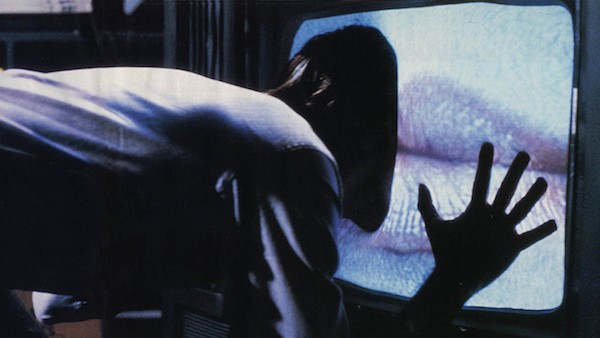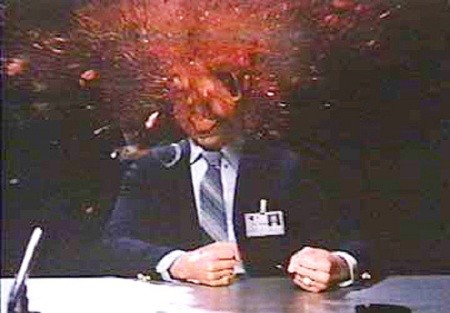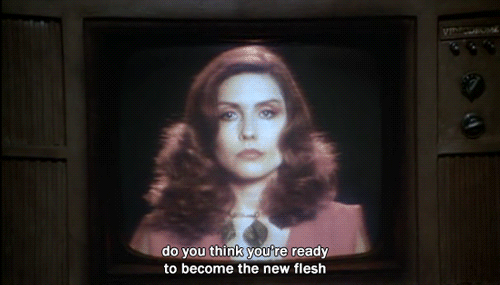So, you ask, what’s all this internetting doing to me, anyway? You’re not alone in questioning the effects of advanced communications tech on the human brain that evolved basically to find food and a mate and create strategies to the get the food and have sex. But you may be surprised to learn that one of the most potent explorations of the question of our relationship to technology was made in 1983.

James Woods gets personal with his new device in Videodrome.
When he created VIdeodrome, director David Cronenberg was coming off his first big hit in Scanners, a horror film about killer telepaths that was sold with the image of a man’s head exploding.

The money shot from Scanners.
Videodrome combined the body and sexual horror themes of Cronenberg’s earlier, low-budget indies with his musings about the evolving media landscape that was increasingly saturated with an expanding cable TV landscape and the home video revolution brought on by the spread of the videocassette players. Cronenberg’s nightmare was a population desensitized to horror and violence and imbued with a desire to merge with the machines delivering the images.

Debbie Harry in VIdeodrome
Starring TV actor James Woods and punk goddess Debbie Harry, the film lost money on release, but became a cult classic when teenage horror addicts seeking cheap thrills found it on video store shelves in the late 80s. Cronenberg moved on to big budget horror pictures in Hollywood, such as his classic remake of The Fly, and later outré literary adaptation such as Naked Lunch and Crash. But for many fans, Videodrome remains his masterpiece.
Tonight at 7 PM, Indie Memphis is screening Videodrome as part of the Memphis in May salute to Canadian cinema. Afterwards, yours truly will participate in a panel discussion with Commercial Appeal film critic John Beifuss, Black Lodge Video proprietor Matt Martin, and University of Memphis Communications professor Marina Levina.
Inside Videodrome